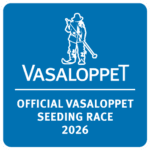The cross country skiing season has already started in many parts of Finland with the help of storage snow. Personally, I started with the first snow already in early October here in Levi. On the opening weekend, there was already a nice buzz about Ylläs-Levi Hiihto, with Ylläs-Levi Powered by Fischer sprint race. All participants, who bought a Levi season ticket, were given a free entry to Ylläs-Levi Hiihto in spring 2025. There were dozens of participants in the end! Next season’s Ylläs-Levi Hiihto (4th to 5th April 2025) will be a historic one, as the first day will be skiing with classic technique and the next day will be with skating technique.
There’s still a good while until the beginning of April, but I’ve put together a few things to consider when training for the first snow.
When moving from summer training to snow, you should avoid moving all your training directly to snow! Once-a-day ski training is sufficient to start with, or even the most sensible thing to do. When moving to snow, it is important to gradually accustom the muscles to skiing to avoid overloading. Snow is a variable element and, especially in the early part of the year, the tracks are often challenging and uneven, changing with every weather condition.
Too heavy training in first snow tires the body and tenses the muscles, so it’s important to include also running (or even roller skiing), mobility, gym and muscle conditioning. However, it is understandable that sometimes you want to make more use of first snow conditions and, for example, because of an injury, skiing may be the only thing you can do easily. Even in these cases, you must be patient and try to find other ways to maintain your muscles. It is also good to vary the pace of the workout and for example, sharp but relaxed 10-15 s strokes in the middle of the workout are good for the muscles and the nervous system.
The first few workouts should be done without monitoring your heart rate too closely, as the new element will raise your heart rate significantly, but it will ease up with the time and more training. Ski for an hour with good technique rather than 1.5 hours accumulating minutes. At this point it is worth reminding yourself of the importance of light and easy training. If you are skiing too hard on snow, it is a good idea to do recovery and light exercises with jogging, pole-walking or roller skiing, depending on the conditions. It is therefore very important to include a very gentle aerobic workout, so that after a long break without skiing, the nervous system recovers and relaxes from the strain of skiing.
From the beginning of the season, it is also good to focus on technique. Choose a trail in good condition where you can ski relaxed and focus on technique and balance. When skiing skating uphill with free technique, remember to use also the ‘weaker’ side to strengthen it as well. Also skiing without poles on both classic and skating is good to start with short intervals. With the classic, remember to have enough grip!
In autumn, the weather can vary a lot, so it’s important to make sure you’re properly dressed to avoid catching a cold. It’s a good idea to change into dry clothes immediately after exercise. However, if you do catch a cold, rest immediately.
With these tips and a touch of relaxation and fun, let’s get ready for the coming skiing season!
Yours sincerely, Ritu
If you are interested and would like to increase your fitness towards Ylläs-Levi Hiihto, I welcome you to join Ritu’s long distance ski coaching group starting 2.12.2024! www.huippumoodi.fi
ps. Coming also: 25.11 long distance webinar! Subscribe to the Ylläs-Levi Skiing newsletter, and be the first to hear about these!
pps. And you can register for Ylläs-Levi powered by Fischer Hiihto here.
